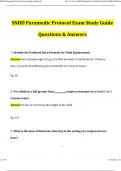Samenvatting
Summary of Change Management & Leadership - Making Sense of Change Management - Esther Cameron & Mike Green - University of Twente - International Business Administration - CHANGEL module
- Instelling
- Universiteit Twente (UT)
Summary of the book Making Sense of Change Management - Esther Cameron & Mike Green. Originally, the summary was written for the subject "Change Management & Leadership" - International Business Administration - CHANGEL module - University of Twente. The summary consists of the following chapters: ...
[Meer zien]














